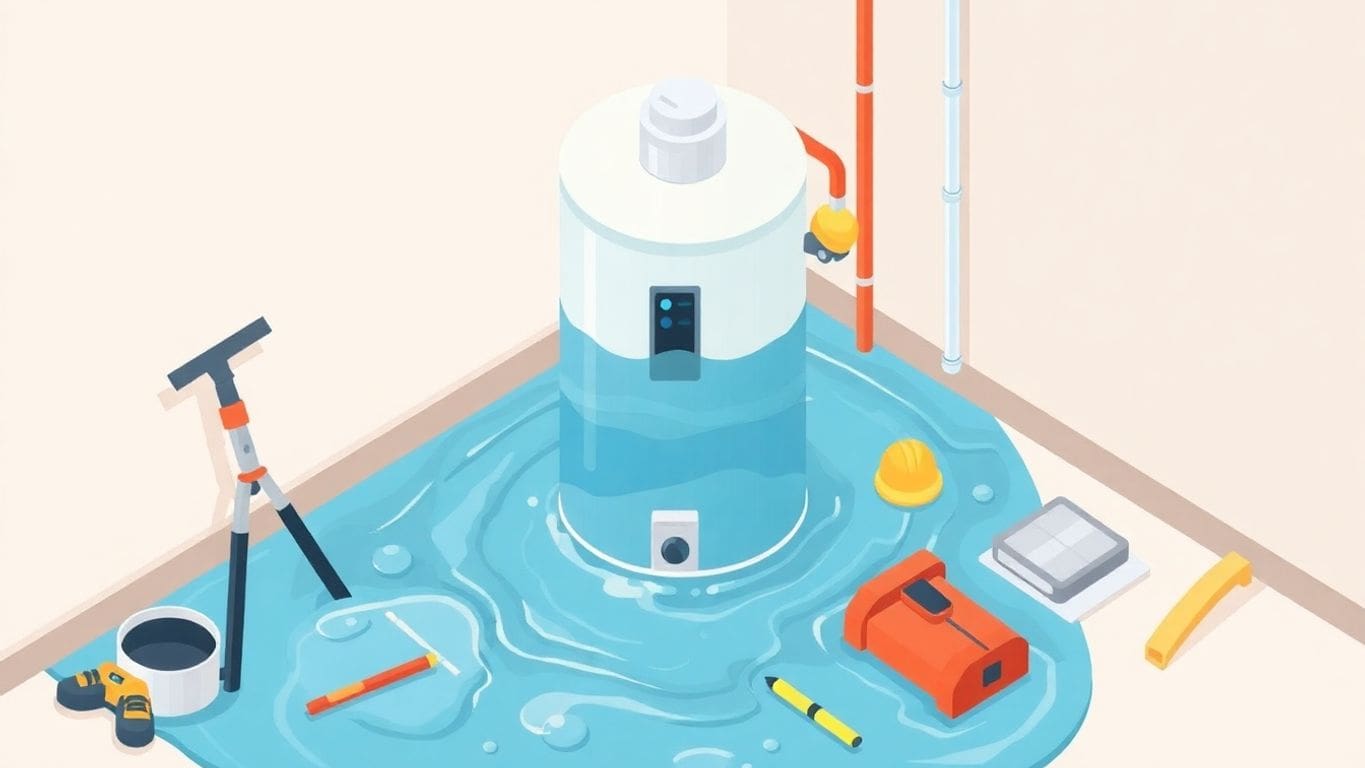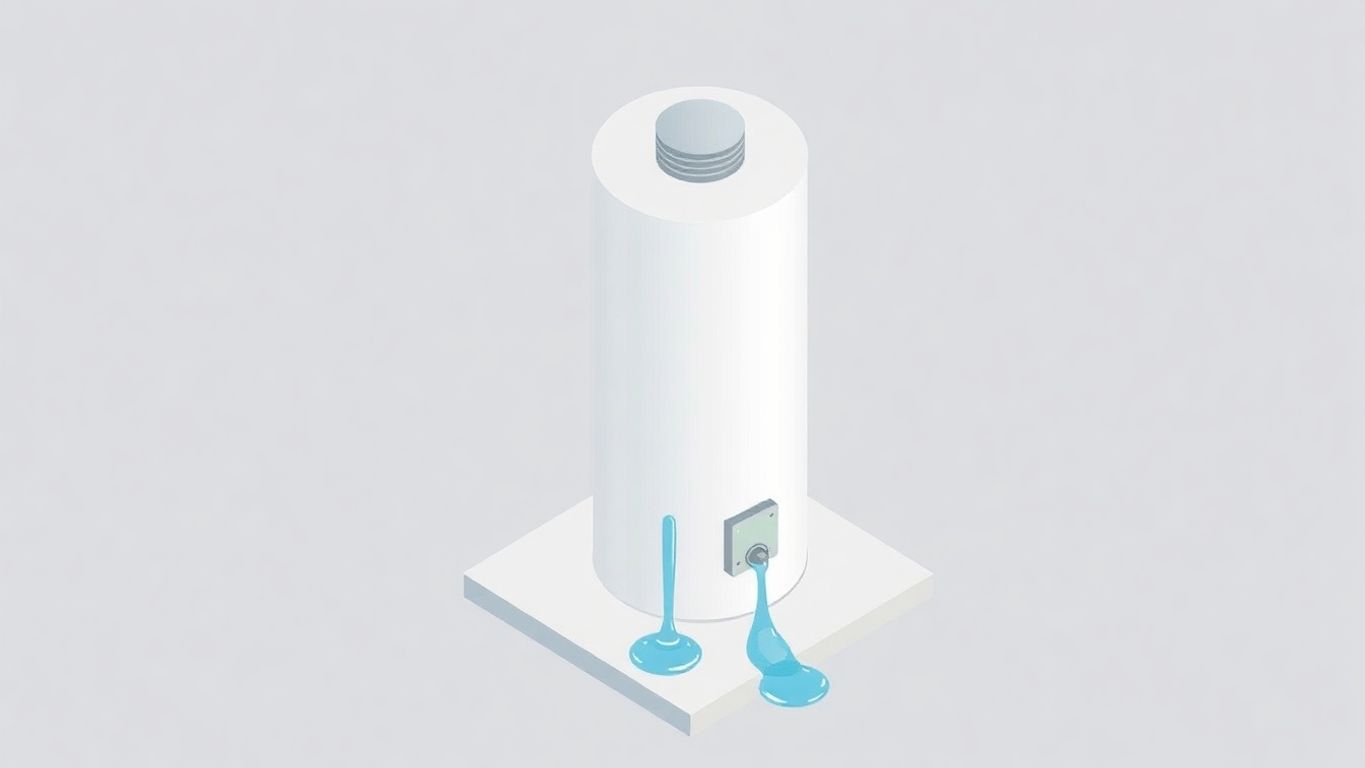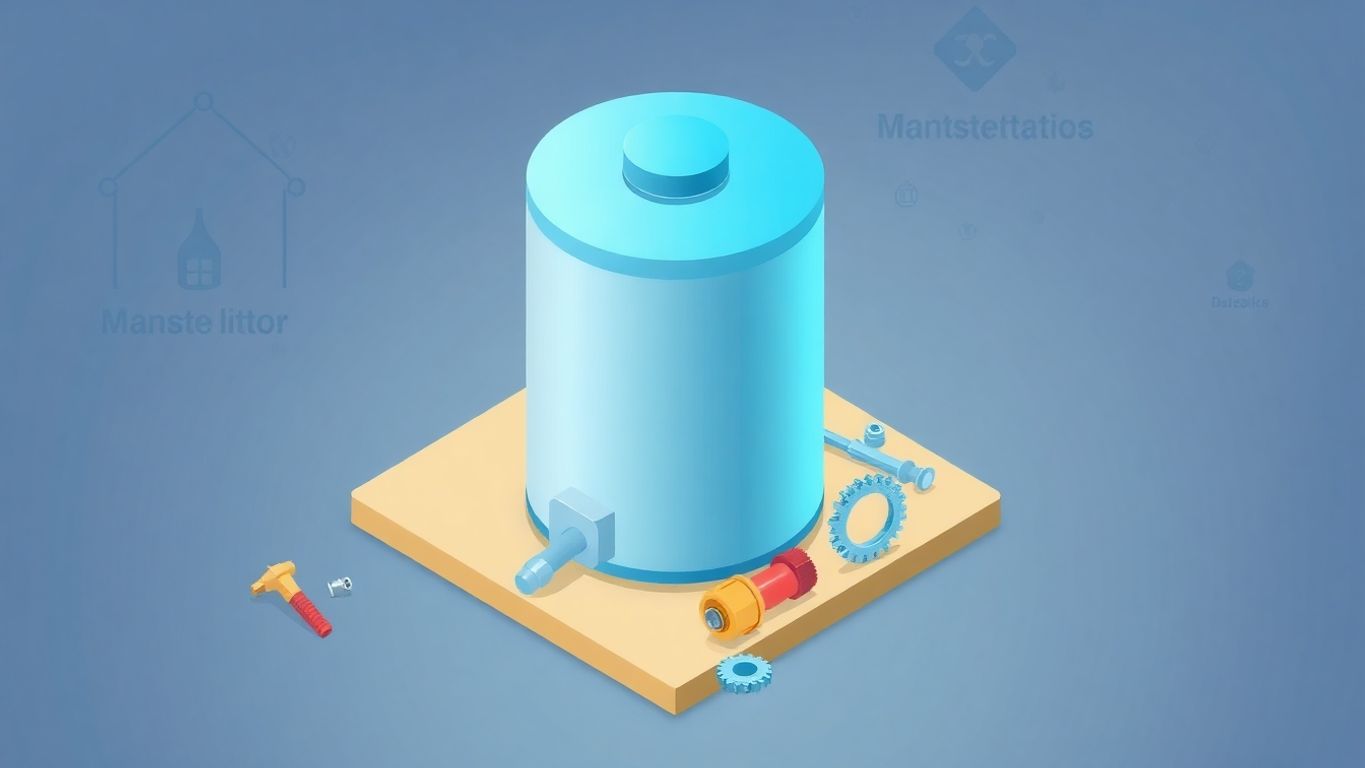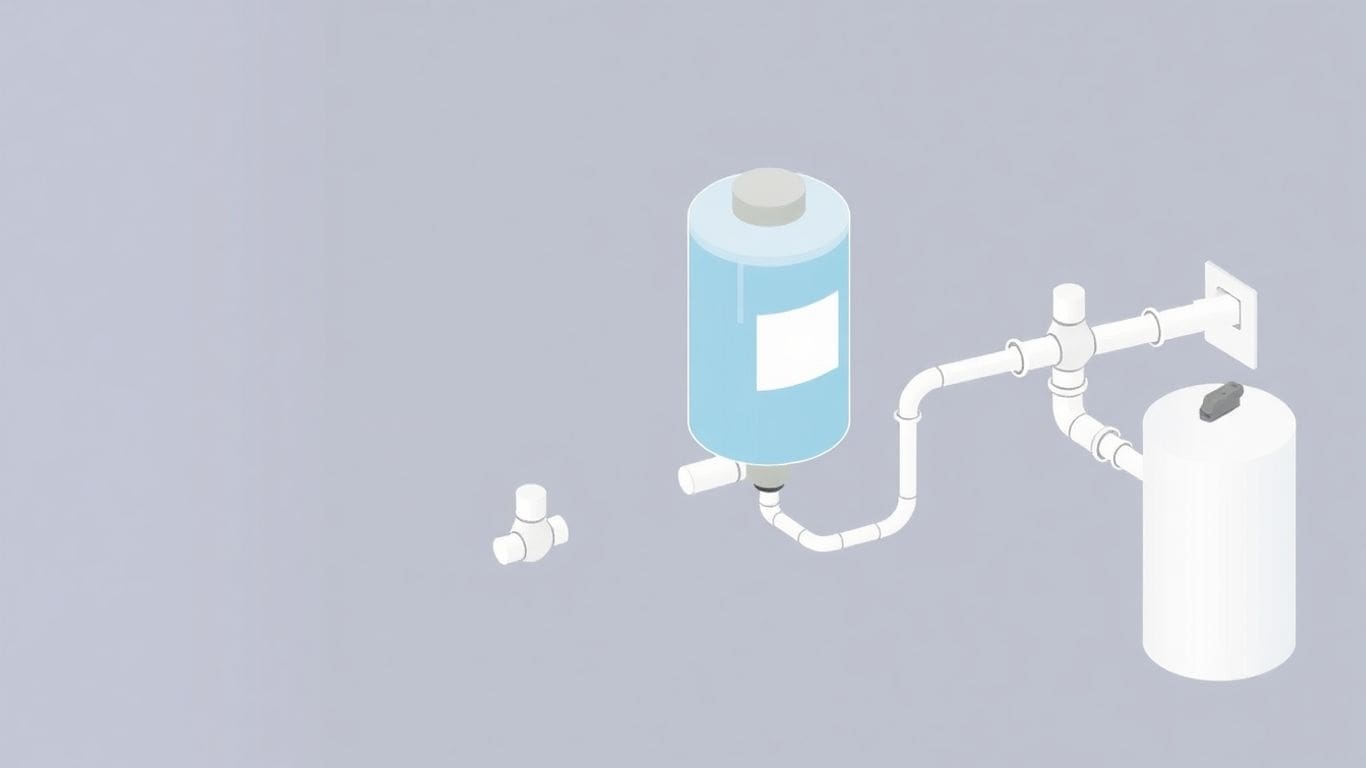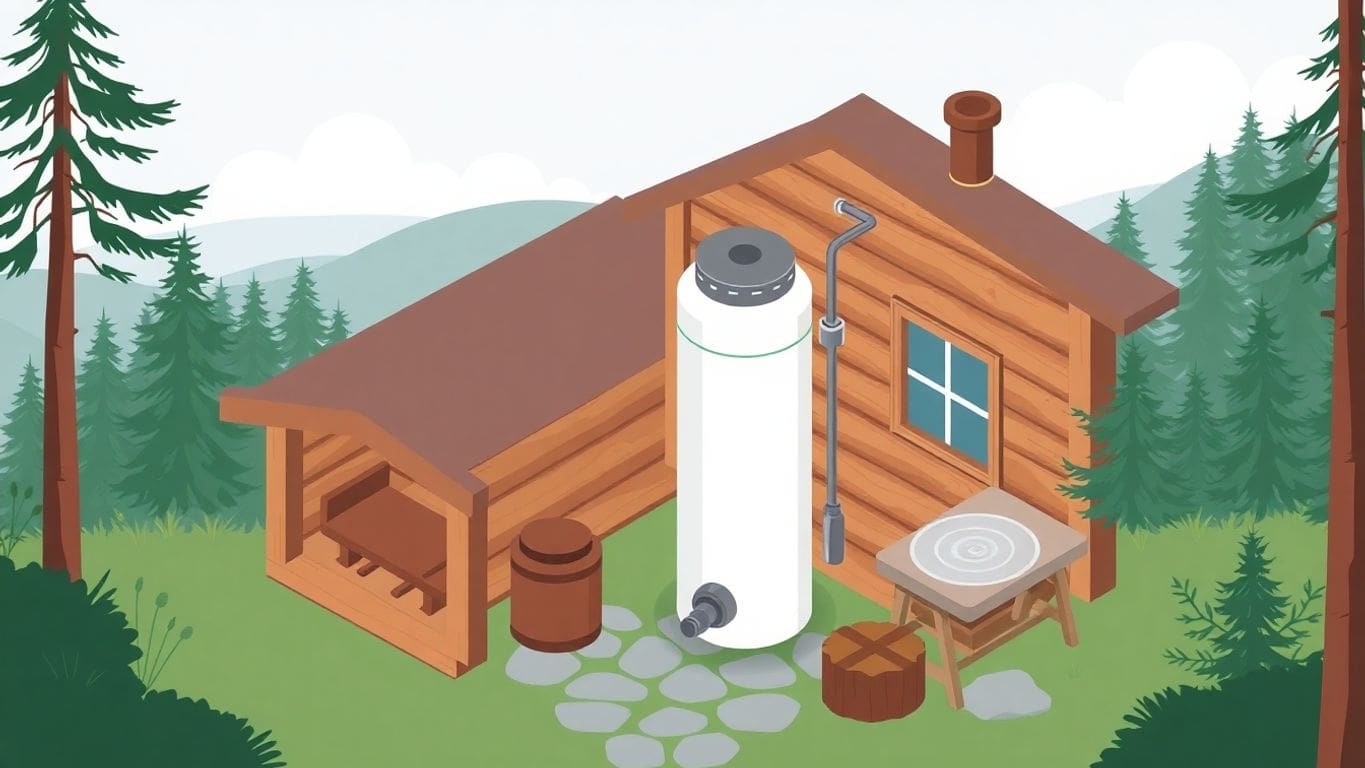If your water heater has suddenly stopped heating, it can be frustrating and inconvenient. Understanding the reasons behind this issue and how to address it is essential for maintaining a comfortable home. This guide will walk you through various troubleshooting steps and solutions to help you get your water heater back in working order.
Key Takeaways
- Always turn off the power before troubleshooting your water heater.
- Check the circuit breaker and reset if necessary.
- Inspect the thermostat settings and replace if faulty.
- Look for leaks around the water heater and address them promptly.
- Regular maintenance can help prevent water heater issues.
Safety Precautions Before Troubleshooting Your Water Heater
Before you start working on your water heater, it’s important to keep safety in mind. Here are some steps to follow:
Shutting Off Power to the Water Heater
- Turn off the power to your water heater. If it’s electric, flip the switch on your circuit breaker. For gas heaters, turn off the gas at the valve.
- If you need to handle any wires, use a voltage tester to make sure they are safe.
Releasing Pressure from the Tank
- Open the cold water supply valve to let out any pressure in the tank.
- Open the drain valve at the bottom of the tank to let some water out. This helps prevent burns from hot water.
Handling Wiring Safely
- Always be careful when working with wires. If you’re unsure, it’s best to call a professional.
- Remember, safety first!
Taking these safety steps will help you troubleshoot your water heater without accidents. Always prioritize your safety before starting any repairs.
Checking the Power Supply to Your Water Heater
When your water heater stops heating, the first thing to check is the power supply. A lack of power is a common reason for this issue. Here are some steps to follow:
Inspecting the Circuit Breaker
- Open your circuit breaker panel.
- Look for the breaker that controls your water heater.
- If it’s in the OFF position or not aligned with the others, it may have tripped. Flip it back to the ON position.
Resetting the Water Heater
- Turn off the power to the water heater at the circuit breaker.
- Remove the access panel on the upper part of the heater.
- Press the red reset button. This button is usually located near the thermostat.
Ensuring Proper Electrical Connections
- Check that all wires are securely connected.
- Look for any signs of damage or wear on the wires.
- If you see any issues, it’s best to call a professional.
Remember, safety first! Always turn off the power before working on your water heater.
Diagnosing Issues with the Thermostat
Setting the Correct Temperature
To ensure your water heater works well, the thermostat should be set between 122 and 140 degrees Fahrenheit. If the temperature is too low, you won’t get hot water. If it’s too high, it can be dangerous. Adjust the thermostat to the right setting and see if that helps.
Identifying a Malfunctioning Thermostat
Sometimes, the thermostat can break. If you notice that your water is too hot or too cold, it might be time to check the thermostat. Here are some signs it might be malfunctioning:
- Water temperature is inconsistent.
- The heater runs constantly.
- You hear strange noises from the heater.
Replacing a Faulty Thermostat
If you find that the thermostat is broken, you will need to replace it. Here’s how:
- Turn off the power to the water heater.
- Remove the access panel to reach the thermostat.
- Disconnect the old thermostat and install the new one.
- Replace the access panel and turn the power back on.
Remember, if you feel unsure about any step, it’s best to call a professional. Safety is important!
Investigating the Heating Elements
Testing the Heating Elements
To find out if your heating elements are working, you can test them. Here’s how:
- Turn off the power to the water heater.
- Remove the access panel to reach the heating elements.
- Use a multimeter to check for continuity. If there’s no continuity, the element is bad.
Replacing a Faulty Heating Element
If you discover that a heating element is faulty, you’ll need to replace it. Here’s a simple guide:
- Turn off the power to the water heater.
- Drain the tank to avoid spills.
- Remove the old element and install the new one.
- Refill the tank and turn the power back on.
When to Consider Replacing the Water Heater
Sometimes, it’s better to replace the whole water heater instead of just the heating elements. Consider this if:
- Your water heater is over 10 years old.
- You have repeated issues with heating elements.
- You notice leaks or rust in the tank.
Remember: Regular checks can help you catch problems early. Keeping your water heater in good shape saves you money and hassle.
Inspecting the Pilot Light on Gas Water Heaters
Relighting the Pilot Light
If your water heater is not heating, the pilot light might be out. You can relight it easily. Here’s how:
- Turn off the gas supply for about 5 minutes to let any gas clear out.
- Switch the regulator to the “pilot” setting.
- If your heater has a self-ignition feature, hold down the ignition knob for 60 seconds, then switch to “on.”
- If you need to use a flame, use a long lighter to ignite the pilot light while holding it over the gas supply tube.
Checking for Gas Leaks
After relighting, check for gas leaks. Make sure the gas inlet valve is open. If it’s closed, turn it until it lines up with the gas line. Wait a moment for the gas to flow before trying to relight the pilot.
When to Call a Professional
If the pilot light won’t stay lit, it might be time to call a professional. Don’t ignore this issue. A faulty thermocouple or gas valve could be the problem. It’s best to get help to avoid any safety risks.
Addressing Sediment Buildup in the Tank
Flushing the Water Heater
Sediment can build up in your water heater over time. This can cause problems like strange noises and reduced efficiency. Flushing your water heater regularly can help prevent these issues. Here’s how to do it:
- Turn off the power or gas supply to the heater.
- Close the cold-water valve at the top of the tank.
- Connect a garden hose to the drain valve at the bottom.
- Open the drain valve and let the water and sediment flow out.
- Once empty, turn on the cold water to rinse the tank until the water runs clear.
- Close the drain valve, remove the hose, and refill the tank.
- Turn the power or gas back on.
Preventing Future Sediment Buildup
To keep sediment from building up again, consider these tips:
- Flush the tank at least once a year.
- Install a water softener if you have hard water.
- Use a whole-house water filtration system.
Signs of Excessive Sediment
Watch for these signs that you may have too much sediment:
- Noisy operation, like popping or rumbling sounds.
- Inconsistent water temperature.
- Rusty or discolored water.
Regular maintenance is key to keeping your water heater running well. If you notice any of these signs, it might be time to take action. Remember, addressing sediment buildup can extend the life of your water heater.
Dealing with Water Leaks

Identifying the Source of the Leak
Water leaks can be a big problem. Finding the source is the first step. Here are some common places to check:
- Cold water inlet: If you see water pooling at the top, it might be leaking from here.
- Pressure relief valve: A slow leak here can cause issues.
- Sides of the tank: If water is leaking from the sides, the tank may be damaged.
Fixing Common Leak Issues
Once you find the leak, you can often fix it yourself. Here’s how:
- Turn off the water supply to the heater.
- Tighten any loose connections with a wrench.
- Replace any damaged parts, like the pressure relief valve, if needed.
When to Call a Plumber
Sometimes, leaks can be tricky. If you notice:
- Persistent leaks after your repairs.
- Corrosion on the tank.
- Uncertainty about how to fix it.
It’s best to call a professional. They can help you avoid further damage and ensure everything is safe.
Remember, regular checks can help prevent leaks. Keeping an eye on your water heater can save you time and money in the long run!
Understanding the Importance of Water Heater Size
Choosing the right size for your water heater is very important. A water heater that is too small can leave you without enough hot water. Here are some key points to consider:
Ensuring Your Water Heater Meets Household Needs
- Think about how many people live in your home.
- Consider how often you use hot water for showers, laundry, and dishes.
- A good rule is that a water heater should provide enough hot water for at least 75% of its total capacity.
Signs Your Water Heater is Too Small
- You run out of hot water quickly during showers.
- You notice lukewarm water when you expect it to be hot.
- Multiple people can’t use hot water at the same time without issues.
Upgrading to a Larger Water Heater
- If your family grows, you may need a bigger water heater.
- Consider the type of water heater: gas heaters usually heat water faster than electric ones.
- Look for models that fit your space and meet your hot water needs.
Remember, having the right size water heater can save you from cold showers and frustration. It’s worth checking if your current heater is up to the task!
Recognizing When to Call a Professional
Sometimes, you might need help from a pro. Don’t hesitate to call a professional if you notice any of these signs. Here are some situations where you should reach out for help:
Persistent Issues Despite Troubleshooting
- If you’ve tried fixing your water heater but it still doesn’t work, it’s time to call someone who knows what they’re doing.
- If you keep having the same problems, a professional can find the root cause.
- Ignoring these issues can lead to bigger problems later.
Safety Concerns
- If you smell gas or see water leaking, don’t wait. Call a professional right away.
- Gas leaks can be dangerous and need immediate attention.
- Water leaks can cause damage to your home if not fixed quickly.
Finding a Qualified Technician
- Look for someone with good reviews and experience.
- Ask friends or family for recommendations.
- Check if they are licensed and insured.
Remember, it’s better to be safe than sorry. If you’re unsure about your water heater, calling a professional can save you time and money in the long run.
Regular Maintenance Tips for Your Water Heater

Keeping your water heater in good shape is important. Regular maintenance can help prevent big problems later. Here are some tips to keep your water heater running well:
Scheduling Annual Inspections
- Check your water heater at least once a year.
- Look for any signs of leaks or rust.
- Make sure all parts are working properly.
Flushing the Tank Regularly
- Drain your water heater once a year to remove sediment.
- Sediment can build up and cause issues.
- Flushing helps keep your water heater efficient.
Checking the Anode Rod
- Inspect the anode rod every five years.
- This rod helps prevent rust inside the tank.
- If it’s worn out, replace it to protect your heater.
Regular maintenance is key to a long-lasting water heater. Don’t wait for problems to arise; take action now!
Common Signs Your Water Heater is Failing
Your water heater can show signs that it is not working well. Pay attention to these signs to avoid bigger problems later. Here are some common signs:
Inconsistent Water Temperature
- You might notice that the water is not as hot as it used to be.
- Sometimes, the water may be too hot or too cold.
- This can happen if the thermostat is broken or set incorrectly.
Strange Noises from the Tank
- If you hear popping, rumbling, or hissing sounds, it could mean there is sediment buildup.
- Sediment can cause the water to overheat and make noise.
- Regular flushing can help prevent this issue.
Rusty or Discolored Water
- If your water looks brown or rusty, it may be a sign of corrosion inside the tank.
- Discolored water can also indicate that the anode rod needs replacement.
- Don’t ignore this sign; it could lead to leaks.
If you notice any of these signs, it’s best to check your water heater. Ignoring them can lead to bigger problems and costly repairs.
Frequently Asked Questions
What should I do first if my water heater stops heating?
Start by turning off the power to the water heater. For electric heaters, flip the circuit breaker. For gas heaters, turn off the gas supply.
How can I tell if my water heater is still under warranty?
Check your purchase receipt or the manufacturer’s website for warranty details. Many warranties last for a few years.
What are common signs my water heater is failing?
Look for signs like no hot water, strange noises, leaks, or discolored water.
Can I fix my water heater myself?
You can try some simple fixes like resetting the circuit breaker or checking the thermostat, but for complex issues, it’s best to call a professional.
When should I consider replacing my water heater?
If your water heater is over 10 years old, frequently breaks down, or if repairs cost more than a new unit, it might be time to replace it.
How often should I flush my water heater?
It’s a good idea to flush your water heater at least once a year to remove sediment buildup.
What does it mean if my water heater is making strange noises?
Strange noises can indicate sediment buildup or a failing heating element. It’s best to investigate further.
How do I know if my water heater is the right size for my home?
A good rule of thumb is that your water heater should meet about 75% of your household’s hot water needs.
